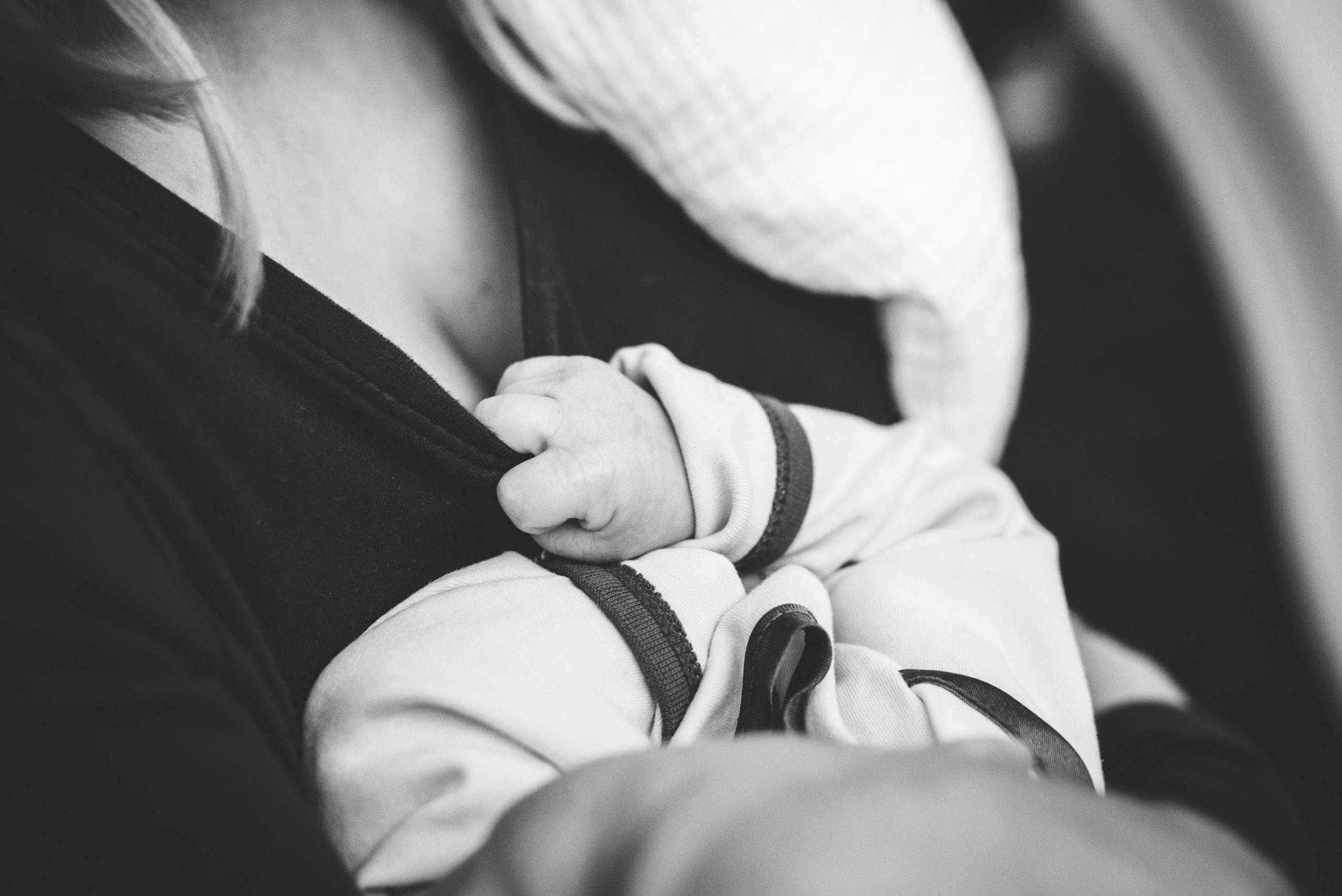
Many parents describe absolute bliss snuggling their sweet new baby right after birth, but sometimes the feelings of doubt creep in when we try to soothe a crying baby. One of my babies had “colic” which resulted in relentless crying and endlessly long days in her first few months. No matter what we tried, she screamed and I truly felt like I was failing as her mother. I was so overwhelmed trying to stop the crying, to fix all the problems.
After weeks of this, in a moment of complete surrender and desperation, I took a deep breath and calmly whispered in her ear, “I hear you. I know you are upset. I don’t know what you’re trying to tell me.” She actually stilled for a moment…and then naturally cried again.
But in that quick moment, I felt comforted letting her know I was there for her. I was trying to connect with her. She was trying to tell me what she needed, and I was trying to listen. I was more at peace and better able to acknowledge her as a person with unique needs and respond in a way that promoted positive bonding.
Connection doesn’t always come naturally.
Caring for a newborn isn’t always natural, and it can be hard to know how to connect with your baby. It is actually very normal and natural for babies to cry, especially around 2 weeks until 3-4 months. But knowing that doesn’t make it easier to manage.
I haven’t read a parenting book that works for everyone. That’s because they often outline “solutions” to baby issues, rather than highlighting opportunities to connect, for listening and responding with respect to the baby as an individual person. We aren’t meant to teach our baby what they need, but rather they show us. How do our responses and interactions change when we view babies as our teacher?
Communication with Baby
When a baby cries, it’s their way of communicating. Many experts will recommend strategies to stop a baby from crying. This approach may lead parents to believe it’s their job to hush a baby and thus inadvertently ignore that communication. Sometimes those techniques are successful, but when they don’t work, it can be extremely frustrating and could decrease your ability to bond with your baby.
Connection is formed when we do things with our baby, not to our baby. Building a relationship with our children is a two-way partnership. Two people interacting, sharing, and connecting. Just as we have wants and needs and emotions, we acknowledge and respect the same in our children, starting at birth. This relationship with our children, including babies, guides our interactions and responses and sets the foundation for development as they grow.
Respond and Connect
As you respond to your baby’s needs, your baby will begin to respond to you. It becomes easier to soothe them as you recognize and respect their needs.
- At 4 weeks, babies begin to respond to your smile through a movement or facial expression and eye contact.
- Around 3 months, babies begin to smile back at you and be more interested in watching you move around them.
- By 4-6 months, babies begin to look for you and expect you to respond when they are upset
If your baby doesn’t respond to you, show interest in people, or make eye contact, please consult with your child’s pediatrician or seek out a speech-language pathologist.
We are able to build connection with our babies by offering consistently gentle and calm support and engaging with them as a person. We meet their obvious needs and try to understand why the baby is upset. Trying things like reducing stimulation, gently holding them, offering skin to skin comfort, cuddling together, or talking or humming sometimes works.
And even so, there still may be times where you find nothing works to calm your baby. It’s in those moments, connection is the most important.
